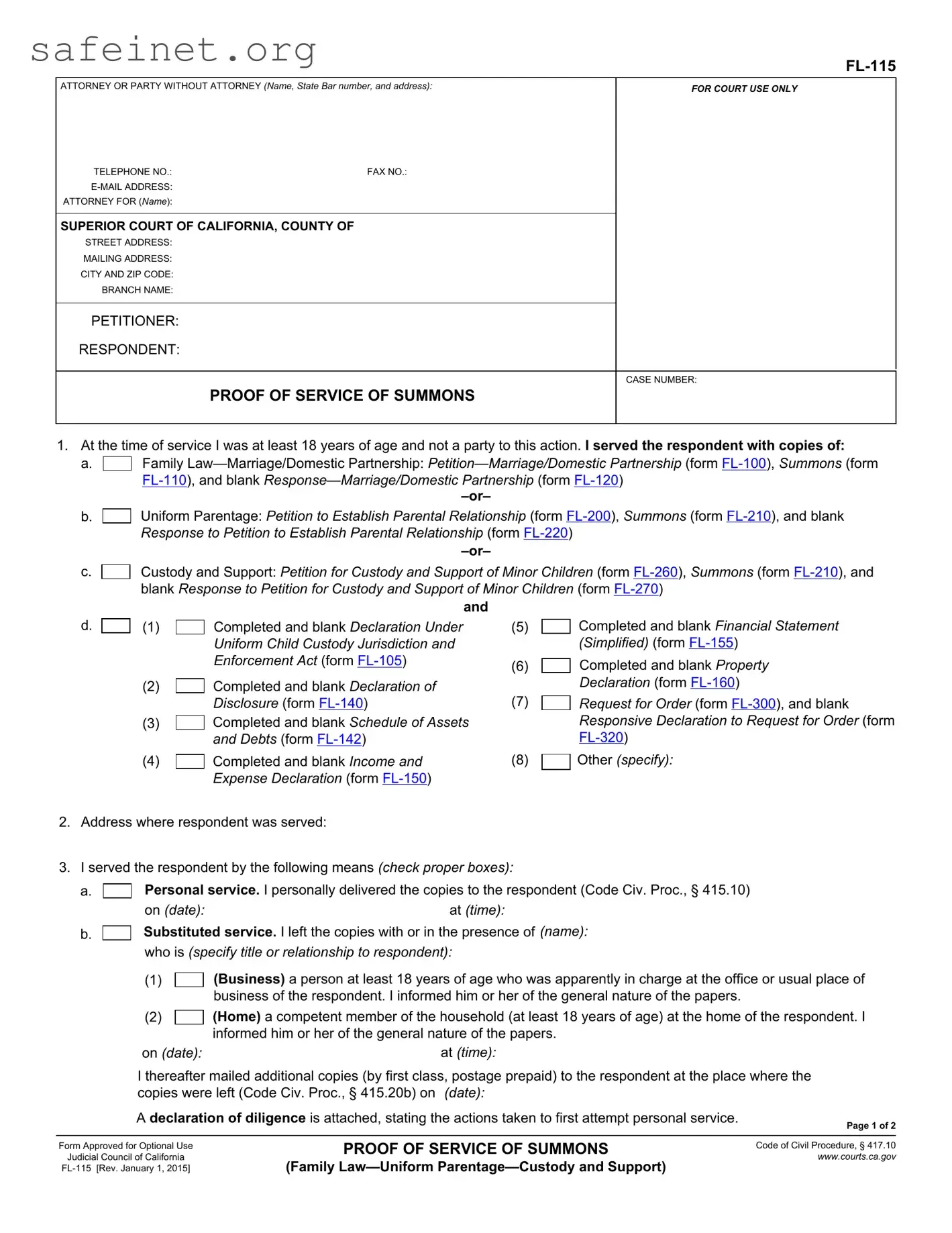What is the FL-115 Proof Of Service form?
The FL-115 Proof Of Service form is a legal document used in California family law cases. It serves to confirm that the required documents, such as the petition and summons, have been properly served to the respondent. This form ensures that the court is aware of the service and maintains the integrity of due process in legal proceedings.
Who can serve the documents?
Documents can be served by anyone who is at least 18 years old and not involved in the case. This means that family members, friends, or professional process servers can perform the service. It's important that the person serving the documents does not have a personal stake in the outcome of the case.
How should the documents be served?
The form provides different methods for serving documents. This includes personal service, where the documents are handed directly to the respondent. Alternatively, substituted service can be used if the respondent is unavailable. This involves leaving the documents with someone at the respondent's home or business and mailing copies afterward. Mail and acknowledgment service is another method valid for certain situations, involving sending the documents by first-class mail with a return acknowledgment.
What happens if the respondent cannot be served personally?
If personal service is not possible, substituted service may be utilized. This allows the server to leave the documents with someone else, such as a family member or business colleague, as long as that person is over 18 years old. After that, another copy should be mailed to the respondent to ensure they receive the documents. A declaration of diligence is required to show that reasonable attempts were made to serve personally before resorting to substituted service.
What should I do if I am not a registered process server?
If you are not a registered process server, you can still serve the documents as long as you meet the age requirement and are not a party to the case. The FL-115 form offers space to indicate whether the person who served the documents is exempt from registration or is a not registered California process server. Just be sure to follow the service requirements outlined in the form.
How do I complete the FL-115 form correctly?
To fill out the FL-115 form, include your name, contact information, and details about the service, such as how and when it was done. Specify the documents served and provide the information of the person who served them. Lastly, ensure to sign the form where indicated; this shows that the information is true and correct under penalty of perjury.



 Family
Family 